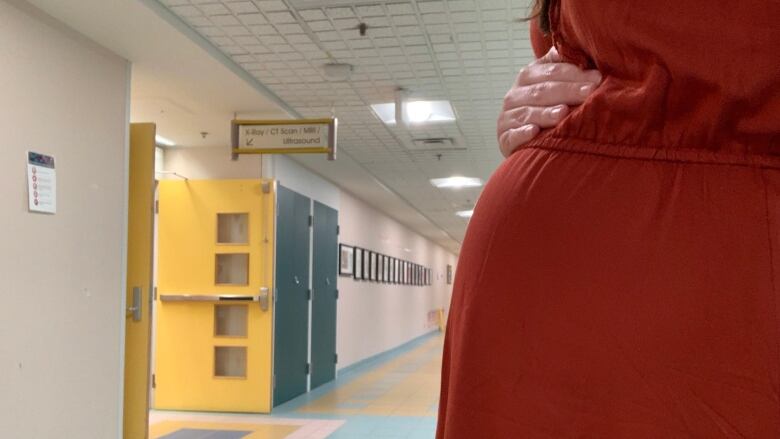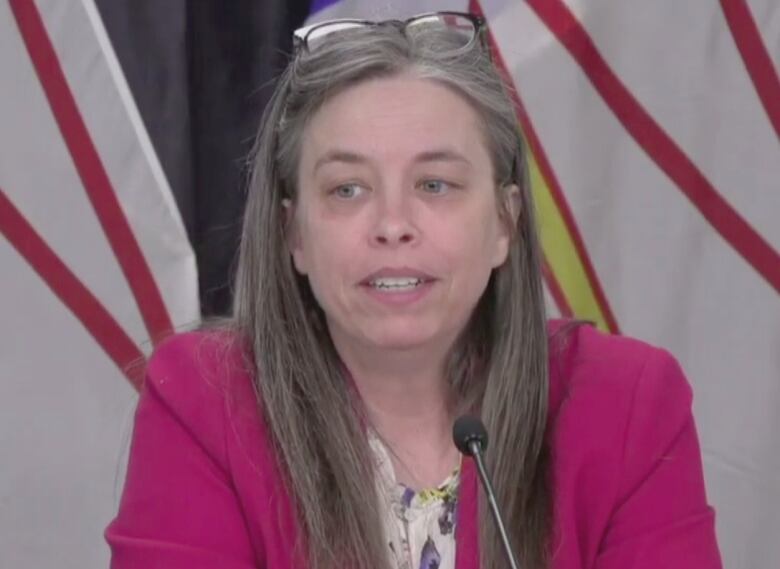Visitor restrictions relaxed for pregnant women and partners, and long-term-care residents
All 4 regional health authorities have near-identical policies

Visitor restriction policies are being relaxed forpeople who are in the hospital, including pregnant women, and long-term-care homes.
The four regional health authorities in Newfoundland and Labrador released similar guidelines within the same hour via media release.
In the Eastern Health region, each patient can have one designated visitora loved one, friend, paid caregiver, or other person of the patient's/resident's choosing, according to the health authority.
Obstetrics patients can have a support person who can stay with them for the duration of the mother and newborn's time in hospital, and can come and go as they choose.
This is a significant change to a strict policy that had been in place for the last couple of months. Previously,only one support person couldattend the delivery room with a mother for active labour. The person could stay for up to four hours of family bonding, once the mother returned to the obstetrics unit.
Critics, including mothers-to-be and their partners, complained this was overly restrictive, and a petition was launched to change the policy.
Residents in long-term-care homes can now see loved ones, too. Previously, it had been video calls and window visits that provided a connection with family and friends.
For people who are in intensive care, they are allowed two support people or visitors at the same time.
"Designated visitors for acute care, palliative care, long-term care, personal-care homes and community-care homes should consult with the patient's/resident's care team about visitation which may vary by facility and circumstances," reads a news release issued by Eastern Health Wednesday afternoon.
Central Health has similar stipulations in its updated policies. So, too does Labrador-Grenfell Health.
Masks required while visiting
Western Health also says one visitor or support person is allowed for each patient and resident in long-term-care centres and hospitals. All four health authorities have stated that people will be provided a mask to wear.
However, the health authority specifically says all visitors will be screened for COVID-19 and will be required to wear a mask.
All of the health authorities sayvisiting hours will be set by each facility, and designated visitors should contact the patient's or resident's caregivers for more specific information.

But what will a visit look like, in a long term care home, for example?
Chief Medical Officer of Health Dr. Janice Fitzgerald said during Wednesday's provincial COVID-19 briefing that each facility will have to take a different approach to how visitors will come and go.
"Some homes have a lot of private rooms, so in that situation, visitors may be able to come in and go directly to their loved one's private room. They will stay in their private room, they'll wear a mask, all of the precautions that you would take," she said.
"In other homes, there aren't as many private rooms and so there has to be a way to ensure that the safety of all the residents are in place, so that may involve them having certain designated rooms where people could go to visit."
Fitzgerald said outdoor visits may also be possible at some facilities.
Larger long term and personal care homes may have to schedule appointments, she said, and all homes will have to ensure that there aren't too many people visiting at the same time.
"All of these facilities recognize the need to be able to control the flow to some degree and to keep track of what visitors are entering the facility as well so that if there is, heaven forbid, an outbreak, we can do contact tracing more easily," Fitzgerald said.
The intent of the policy, she said, is to reduce the number of people coming in and out of health facilities, but a patient may be able to change their designated visitor in some extenuating circumstances.












_(720p).jpg)


 OFFICIAL HD MUSIC VIDEO.jpg)
.jpg)



























































































